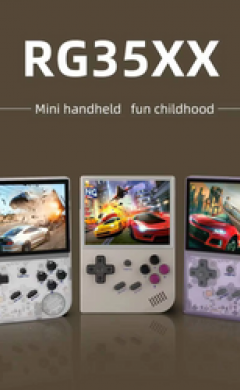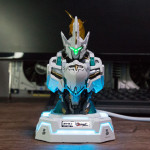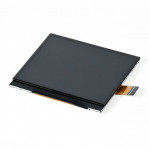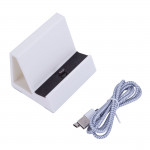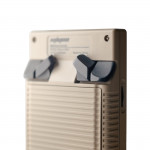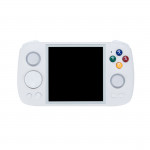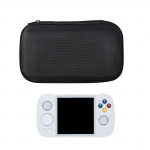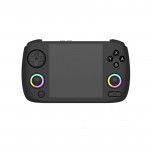Powkiddy V10 vs RGB20: Come Here Often?
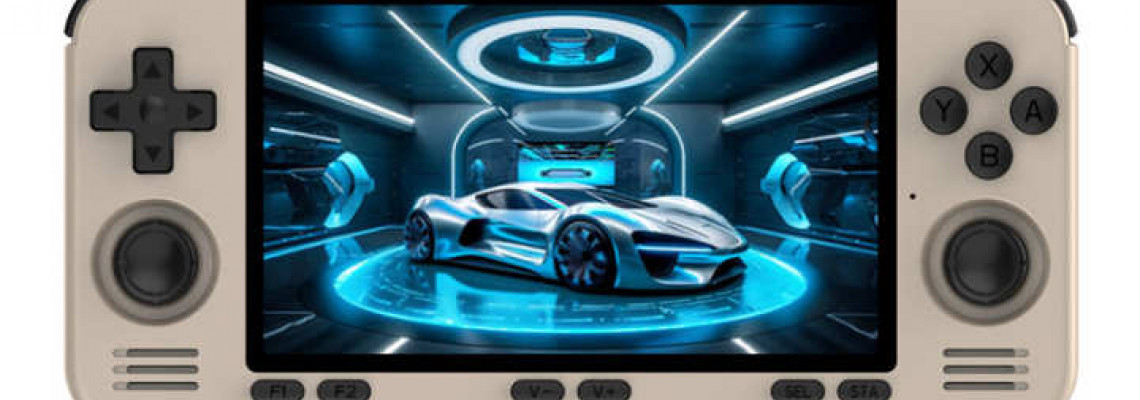
Powkiddy V10 vs RGB20: Come Here Often?
Picture This: By the end 2020, everyone is talking about the Rockchip RK3326. Retroid published its Pocket 2 in January, Anbernic released the RG351P in September, and Hardkernel released its Odroid Go Advance in June. What is Powkiddy's job? The RGB20, their most AI-styled Vertical GBA device, retails for roughly $70: that lovely 3326, a single stick, and shoulder buttons inside the frame.
However, it is now July of 2024. Game Console is bringing the RK3326 back, and instead of 3:2 RK3326 devices, everyone is talking about the Retroid Pocket 4 Pro or Abernic's RG Cube. What is Powkiddy's reaction, then? The V10, their most AI-styled vertical GBA device, retails for around $40: no Wi-Fi, no sticks, and that excellent 3326.
Have we not been here before? Let's discuss whether it makes more sense to purchase the newest hotness for $40 or less or settle for a four-year-old piece of equipment that has dropped to $45.
Specs
Before I go any further, let me list the specifications of these two handhelds so you can see what you're dealing with. Each category will cover something worth comparing between the two devices.
Powkiddy V10
- Display: 3.5-inch IPS screen
- 480:320 resolution (3:2 aspect ratio)
- GPU: Mali G31 Processor: Rockchip RK3326
- 1GB of RAM
- 3,000mAh battery
- Extras: Two USB-C ports, one Micro SD slot, one 3.5mm headphone jack, and no Wi-Fi
- 103.2 x 94 x 22.5 mm (the thickest point is closer to 30 mm)
- 164 grams in weight
- Colours: Beige, Gray, Transparent Purple, and Transparent Black
Powkiddy RGB20
- Display: 3.5-inch IPS panel with a 480:320 resolution (3:2 aspect ratio)
- GPU: Mali G31
- Processor: Rockchip RK3326
- Battery: 3,000mAh;
- RAM: 1GB
- Extras: Wi-Fi, one Microsd slot, two USB-C ports, and one 3.5mm Jack for headphones
- Measurements: 108x93x20 mm
- 172 grams in weight
- Colours: Gray/Black or Red/Gold
It looks somewhat similar. That's because they truly are, without the Wi-Fi and minor dimensional variations. Compared to some of the competition, that's not terrible.
Here are some RK3326 weight comparisons for comparison's sake.
- V10 – 164 Grams
- R33S – 165 Grams
- RGB20 – 172 Grams
- R36S – 188 Grams
Ergonomics
I wanted to discuss ergonomics to prolong the life of those RK3326 devices.
Even though I'm a massive lover of vertical gadgets, I use my horizontal devices more than my vertical ones because verticals never have the best ergonomics. The RGB20 and V10 are wider, so they are marginally more comfortable than the R33S and R36S. I like my tall boy handhelds better, even though they still don't have a real chin.
The RGB20 and V10 diverge most regarding ergonomics at the shoulder buttons. The V10's slanted shoulder buttons are large, pleasant, and click delightfully. My fingers fit inside them perfectly, and they alert you to them.
Conversely, the RGB20 has positioned its shoulder buttons and drilled holes at the device's rear. When you put your index fingers in the holes, these little Tic Tacs alert you to how fat they are.
Additionally, the RGB20 has a sticky soft-touch plastic that I believe will ultimately turn to crap, whereas the V10 has a beautiful, smooth plastic that is simple to handle.
Powkiddy has at least marginally improved its ergonomics in the last four years.
Controls and Screens
Regarding the screens, you're looking at two excellent 3:2 panels that precisely double the original aspect ratio of GBA. These gadgets are designed to play GBA games. Aspect ratios such as 4:3, 10:9, and others will work well here, but they will have more black borders than these systems.
Additionally, my RGB20 display is a little brighter and more saturated, but I would attribute this to variations in these screens from run to run.
What about controls? Compared to the RGB20, the V10's face buttons are less chunky and lighter to push. I favour the V10's lighter, easier-to-press buttons, which carry into the D-Pad. However, I've observed that the V10's D-Pad doesn't strike my up-left diagonal as well as other D-Pads or the RGB20. While this is generally acceptable, it has resulted in several fatalities in Celeste.
Not quite as terrible as Stubbs, though.
The controls stay the same aside from that. Press the Start and Select buttons. The buttons II and V, sometimes called—and +, are clicky and serve as hotkeys for brightness, volume, and end games. The RGB20 is superior because it has a clicky switch stick and dedicated L3 and R3 buttons. But is that okay?
The V10 excels in having more developed and targeted controls. Because it has more buttons, the RGB20 wins.
The Firmware
The firmware comes last. Although it has a three-year-old version of Arkos with Emuelec on the front, the RGB20 has existed for four years. With the accompanying Arkos 2.0 version, the V10 has had some time. Nevertheless, ArkOS 2.0 for the RGB20 is plug-and-play.
Yes, the V10 has an ArkOS build that functions via the ArkOS website and is straight out of the box. These devices run some of my favourite portable firmware, making them a huge win on this low-cost spectrum. Besides the Wi-Fi limits noted earlier, I haven't experienced any problems yet.
Apart from that, everyone is familiar with the routine. So join me in saying it. The RK3326 performs admirably in all categories, starting with the PS1. You can acquire some Dreamcast, N64, or PSP, but consider it an added benefit for whatever you're running.
Even if you need to tweak that RK3326 a bit, they're both good overall if you only use the OS.
Final Thoughts
Should you get the RGB20 in 2024? No, unless you must have a 3:2 vertical handheld with Wi-Fi for less than $50. I suggest replacing the Wi-Fi with the V10 if you don't need it. It is more affordable, runs ArkOS right out of the box, is more comfortable than the 4:3 verticals, and is a good value.
Regarding competition? If you want the greatest custom firmware available with Onion OS, get the Miyoo Mini for about $40. If you want a taller gadget with sticks and a 4:3 screen, get an R36S for about $30. However, if you want to play GBA, you should purchase the V10.
The V10 will replace any of my everyday drivers. But for less than $40, it's such a great gadget that I'd be pleased to suggest it to anyone. Remind them how to adjust the brightness and volume. Don't offer the RGB20, either. The V10 is less expensive and unsightly, and its soft touch finish will ultimately goopy.
